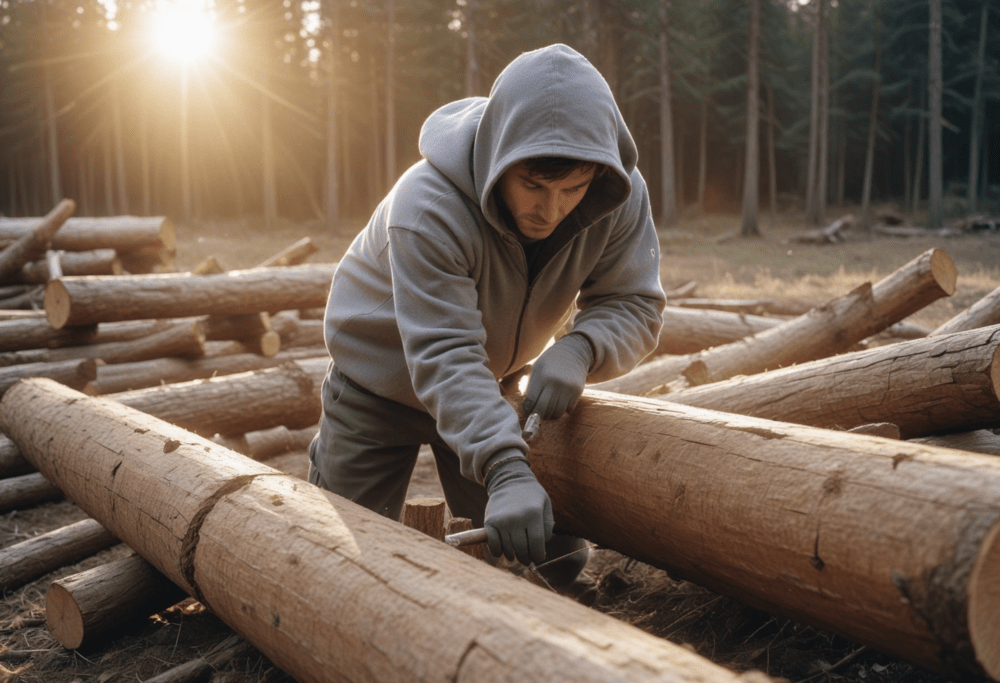

Mushroom cultivation on logs is an age-old practice. Hi, I am Clara, today I will guide you on how to grow mushrooms on Logs. Remember, not every mushroom variety can be grown on logs. I will tell you which mushrooms can be grown on logs, when to prepare the log for mushroom cultivation, and which tree logs can be used for log cultivation.
First of all, growing mushrooms on logs is a natural process and a slower one. But your patience will give you rewards. You can grow large amounts of fungi/mushrooms for several years.
Many types of mushrooms can be successfully grown on logs, though some are more commonly cultivated this way. I have created a list of popular mushroom varieties that you can grow on logs. I have also added the tree names that are suitable for the specific mushroom species.
| Mushroom | Best Logs | Notes |
|---|---|---|
| Shiitake | Oak, Maple, Beech, Chestnut | Thrives on dense hardwoods; enhances rich flavor. |
| Oyster | Poplar, Aspen, Willow, Cottonwood | Fast-growing; suitable for softer woods. |
| Lion’s Mane | Beech, Maple, Birch, Oak | Grows well on various hardwoods; unique pom-pom fruiting bodies. |
| Reishi | Oak, Maple, Elm, Beech | Medicinal mushroom; grows slowly on dense hardwoods. |
| Maitake | Oak, Maple, Elm | Medicinal; prefers dense hardwood logs. |
| Turkey Tail | Oak, Maple, Willow, Alder | Easy to cultivate; grows well on a variety of hardwoods. |
| Nameko | Oak, Beech, Maple, Cherry | Produces small, amber-colored mushrooms with a gelatinous cap. |
Each of these mushrooms has different needs regarding temperature, moisture, and the type of wood they prefer, so it’s essential to match your chosen mushroom variety with the right kind of log.
So choose the log according to the mushroom variety that you intend to grow.
Logs should be freshly cut from healthy trees, ideally within the last few months. Aim for logs that are 3-8 inches in diameter and 3-4 feet in length. Why? Because thicker logs hold moisture longer, which mushrooms love, while smaller logs dry out faster and might only support a season or two of growth.
Recommended article: Mushroom Inoculation Full Guide
Once you’ve gathered your logs, the real work begins. The best time to prepare your logs is during late winter to early spring when trees are still dormant. You’ll need to drill holes into the logs—about 1 to 1.5 inches deep and spaced about 6 inches apart in rows running along the length of the log. These holes are where you’ll insert mushroom spawn.
Mushroom spawn comes in several forms: plug spawn, sawdust spawn, and grain spawn. For logs, plug spawn—which looks like small wooden dowels inoculated with mushroom mycelium—is often the easiest to use. Sawdust spawn is another option, though it requires a bit more finesse when plugging the holes.
Insert the plugs into the holes, then seal them with melted wax (beeswax or cheese wax works well). This prevents contaminants from sneaking into the log while keeping the moisture in.
Mushrooms, like all fungi, are particular about their environment. They love cool, shady, and moist conditions, similar to what you might find in a forest understory. Find a place where your logs won’t dry out but can still get fresh air. Ideally, the logs should be stacked in a way that allows for airflow while maintaining a damp environment.
One popular method is to lean the logs against one another in a teepee-like structure, known as a log cabin stack. Or you can lay them horizontally on a raised platform. The key is to avoid direct contact with the soil, as this increases the risk of contamination from other fungi.
You don’t need to soak your logs every day, but periodic watering, or even soaking the logs for 24 hours every month or so, will help maintain the right level of moisture. This step is especially important during the hot summer months.
Mushroom cultivation on logs requires patience. After inoculation, the logs need time to incubate. The mushroom mycelium—the fungal network that will eventually produce fruiting bodies—will begin spreading through the wood, breaking it down slowly. This process can take anywhere from 6 months to a year, depending on the type of mushroom and local conditions.
But don’t worry—good things come to those who wait. Once the mycelium has fully colonized the logs, mushrooms will start to “fruit,” popping out from the log surface. These fruiting cycles can continue for several years, with each log potentially yielding multiple flushes of mushrooms annually.
If you compare it with other growing methods then it definitely this one is a slower process. You will get your first crop after 6 months (at least).
The time it takes for mushrooms to grow on logs depends on the mushroom species, the type of wood used, and environmental conditions.
In general, it takes at least 6 months to a year for most mushrooms to fruit on logs, with continued production for several years after that.
I hope this is helpful to you.